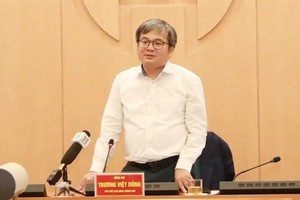According to Decision No.02/2023/QD-TTg on the average retail price of electricity in 2023 effective from February 3, the minimum average retail power price is VND1,826.22 per kWh, up VND220 compared to the old price bracket, and the maximum is VND2,444.09 per kWh, up VND538.
Mr. Tran Viet Hoa, Director of the Electricity Regulatory Authority of Vietnam under the Ministry of Industry and Trade (MoIT), said that this price bracket, together with the results of the inspection of electricity production and business costs in 2022, will be the basis for the MoIT to decide on the average electricity retail price to apply in 2023. Up to now, the MoIT has issued a document directing the Electricity of Vietnam (EVN) to urgently calculate the costs and develop a plan for the average power retail price in 2023.
Assessing the new price bracket, in the context of high input costs of the power industry and EVN's production and business losses of about VND28.88 trillion, Mr. Nguyen Tien Thoa, Chairman of the Vietnam Valuation Association (VVA), former Director of the Department of Price Management under the Ministry of Finance (MoF), said it is necessary to consider and adjust the electricity selling price at a reasonable level to ensure the harmonization of interests of power enterprises and consumers.
Otherwise, the power industry will suffer losses, and EVN will not have money to pay for power-generating units, affecting energy security and investment attraction in power generation, transmission, and distribution, he added.
According to Mr. Nguyen Tien Thoa, according to the principles of the Law on Price, the power selling price must be enough to cover production and business costs for the electricity industry, and according to calculations, the new price must increase by about 15 percent compared to the current selling price to be considered sufficient.
However, a sudden increase of 15 percent, as calculated, will negatively impact people's lives and inflation. Therefore, the Chairman of the VVA suggested that the electricity price increase could be divided into two phases, with an increase of 7-8 percent each. In this way, it will only push up inflation in the first phase by about 0.2 percent. Then if the situation is favorable in the last months of the year, the macro-economy is stable, and inflation is controlled within the set target, the second power price adjustment can be made.
























